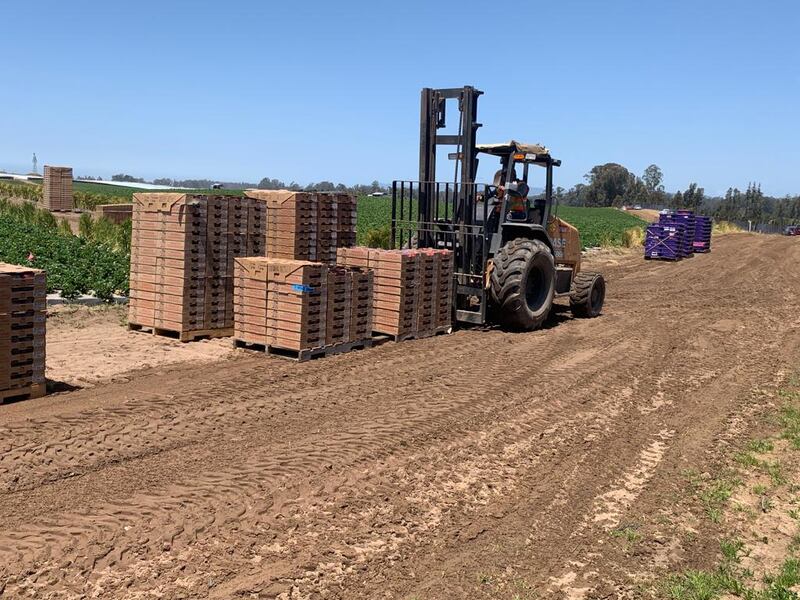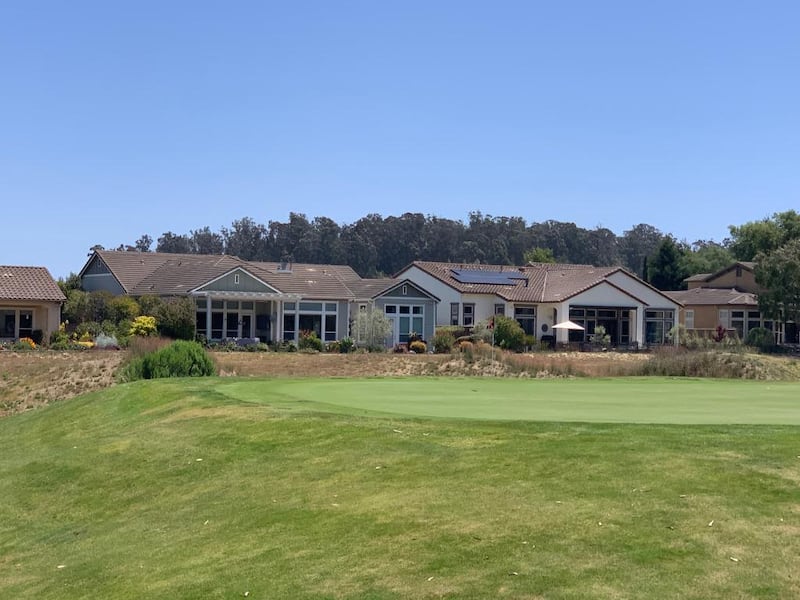Travelling between Los Angeles and San Francisco, it’s impossible – for me at any rate – to escape the literary history of the area. Salinas, Monterey and the fertile flatlands between the mountains all provide the settings for three of John Steinbeck’s best novels, Cannery Row, Of Mice and Men and, of course, East of Eden. And how those flatlands were, and still are, farmed is the backdrop for one of Woodie Guthrie’s best known songs, Plane Wreck at Los Gatos, better known as Deportee.
Highway 101 runs right the way through the Salinas Valley, every square inch of which is farmed now on an industrial scale. There are few gaps between the fields, just a vast expanse of flatness filled with the rich, fertile sandy soil in which market garden plants thrive. There were acres of cabbage, broccoli and lettuce, globe artichoke, onions and garlic, and vines – lots of vines.
At the sides of the road, and by the entrances to the fields, there are often stacks of transportable piping – means by which irrigation systems may be installed as needed during the growing seasons. It’s the same further south, as I saw when riding Highway 1, the narrower road a welcome break from the racetrack that is 101.
At harvest time, if machines can’t do the job, the fields are filled with scores of people, bent over and working in lines across the drills, picking as they go. Just past Guadalupe, they were doing that in huge strawberry fields. The road rose and at the crest of the hill, I had a good view to my left, where the picking was happening.
RM Block
What caught my eye first was a flag flying from the top of an open-sided shed between the field and the road. It was not the ubiquitous stars and stripes but the flag of Mexico. I stopped to take a picture and could see some women apparently co-ordinating the gathering of the fruit. They all wore ski scarfs pulled up over their faces to protect them from the intense sun as they logged the number of boxes ferried over to them by forklift trucks. The boxes were then stacked, I assume, to be loaded on to lorries and brought to market or direct to shops.

The field where the pickers worked seemed to stretch on forever, falling away from the road. I leant over the fence to watch and got chatting to one of the women. I asked how many worked there. The woman said 300. All Mexican? All Mexican, she said, like her.
The woman said they worked for Eat Sweet, which I later learned was the name of a farm a little further south that presumably owned, or leased, this land too. The ultimate owner was a company named Central West Produce, trading with the slogan Berries by the Sea. The berries in question are strawberries, blueberries, raspberries and blackberries and the company is clearly a very major player with farms in California, Florida, North Carolina and Mexico.
As I watched and chatted, some of the other women took off into the field and picked strawberries. The pickers (they were too far off for me to see if they were mainly men, women or a mix of both) appeared to come to work in cars, as numerous vehicles were parked by the entrance to the farm and at the field’s edge. So they were sufficiently well off to afford transport, I thought. Around about the area generally, there were clusters of caravans and RVs which I took to be the temporary homes of these workers, whether migrant or resident in the US I know not.
As I left, I could see through a line of trees on the other side of the road where there was a golf course in view, the fairway of which was lined with houses. I decided to have a look. Inside was a huge and growing estate named Trilogy, much of it built around the golf course which was named Monarch Dunes. There was nothing symmetrical about the layout of the estate. The roads wound this way and that, and features of the landscape, such as clusters of trees or small hills, had been kept, enhancing a sense of intimacy, despite their being hundreds of homes.

Fields of vines mingled with open spaces of the estate, as though sharing parkland helped to disguise the fact that there were hundreds of homes packed fairly close to each other. The homes themselves were typically suburban American – beautiful bungalows, each one just a little different from its neighbour, with perfectly maintained laws, roadside edgings, shrubs, trees and water features.
My suspicion that Trilogy would be attractive to retirees was hardened by the presence of a primary care facility and what was styled as a Dignity Health Lab. A woman in a bookkeeping office beside them said the whole project began about 10 years ago and was still being added to in phases. Indeed, signs mentioned reserving units in a proposed new village centre.

Woody Guthrie’s song was all about a 1948 plane crash in which 28 migrant farm workers being deported to Mexico died – their bodies “scattered like dry leaves” as he put it, asking “is this the best way we can grow our big orchards? Is this the best way we can grow out good fruit?” I like to think that the Mexicans working the fields of southern California today are treated significantly better than their predecessors were, nearly 80 years ago. The Mexican influence is omnipresent: in restaurants, shops and hotels, almost all staff appear to be Mexican in origin and, insofar as can be gleaned from casual conversations, they seem to be happy to have the opportunity to work and earn money.
I slept for the night in Pismo Beach where fellow campers included Pat and Reese Banta. Pat was stunt double for Harrison Ford and Jim Carey, as well as for Roger Moore in several of his James Bond films too. Reese was a precision driver for films too. I’m not sure who had more fun but they were both into biking. You really can’t escape the movies here.
Peter Murtagh is travelling by motorbike from Tierra del Fuego, at the tip of South America, to Alaska, at the top of North America, and writing here regularly. You can also read his blog and follow him on Twitter, Facebook and Instagram

















